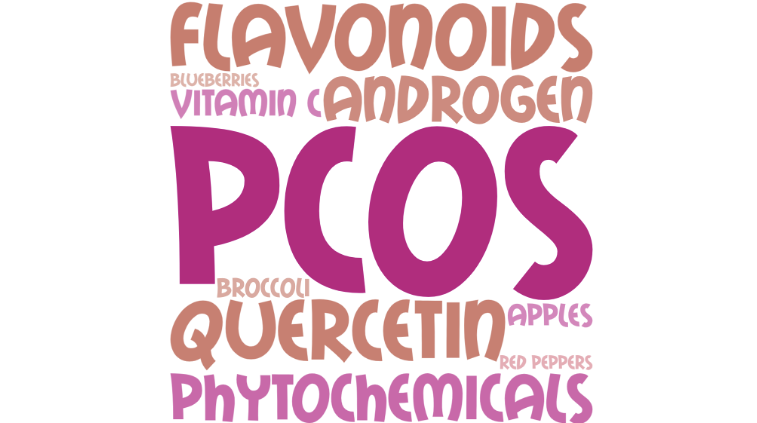PCOS & Phytochemicals

Polycystic ovary syndrome is a common diagnosis for women of childbearing age. As many as six million women in the United States (nearly 10% of the US population) have symptoms of PCOS.1
PCOS is a hormonal disorder classified by three main features: the lack of ovulation, overproduction of androgen hormones, and the presence of multiple cysts on the ovaries.2 A diagnosis can be made when the patient has two or more of the features with no other notable cause.2 PCOS can cause symptoms like infertility, thinning hair, changes in the menstrual cycle, and multiple ovarian cysts. Many people with PCOS also have an increased risk of endometrial cancer because of anovulation; decreased insulin sensitivity, which can lead to diabetes; and increased fatty deposits in the liver, leading to liver damage.1 The exact cause of PCOS is still unknown, but there have been some advances in the treatment of the condition.
Typical treatment for PCOS can consist of medications, diet changes, and surgery, in some instances. We now know that phytochemicals can be an important part of treatment for PCOS. There are thousands of phytochemicals, each with unique characteristics and potential health benefits. Recent studies have started to unveil the intriguing connection between phytochemicals and gynecological health.2,3,4
Some phytochemicals, like flavonoids, can temper PCOS symptoms by inhibiting enzymatic activity.3 The ring structure of these phytochemicals mimics the site of interaction of some key enzymes in the formation of androgen hormones that exacerbate symptoms of PCOS.3 When the enzymes connect with phytochemicals instead, there is a decrease in the amount of androgens made in the body and a subsequent decrease in symptomatology. As our understanding of these potent compounds deepens, we gain valuable insights into how they may positively impact gynecological health.
Quercetin is a flavonoid found in red peppers, broccoli, apples, and blueberries. It has been shown to lower the amount of circulating androgens in the blood as well as having anti-inflammatory and antioxidant effects.4 Quercetin is not absorbed well into the body on its own. To assist quercetin uptake, foods with quercetin should be eaten alongside good sources of vitamin C or bromelain (an enzyme found in pineapples).
While research into the role of phytochemicals in gynecological diagnoses is promising, it is crucial to approach these findings with caution. Further rigorous studies, including clinical trials, are necessary to establish the safety and efficacy of phytochemical-based treatments. Additionally, it is essential to remember that phytochemicals should not replace conventional medical treatments. Instead, they should be viewed as complementary approaches to support gynecological health when incorporated into a healthy diet and lifestyle.
Citations
1. Endocrine Society. (2022) Polycystic ovary syndrome. Endocrine Society.
2. Rudnicka, E., et al. (2022) Oxidative Stress And Reproductive Function: Oxidative stress in polycystic ovary syndrome. Reproduction (Cambridge, England), 164(6), F145–F154.
3. Luo ED, et al. (2023) Advancements in lead therapeutic phytochemicals polycystic ovary syndrome: A review. Frontiers in Pharmacology.
4. Tabrizi F.P., et al. (2020) Quercetin and polycystic ovary syndrome, current evidence and future directions: A systematic review. Journal of Ovarian Research.
This article was part of the August 2023 e-news FRESH Rx. Subscribe for similar content delivered to your inbox monthly.
- Categories: